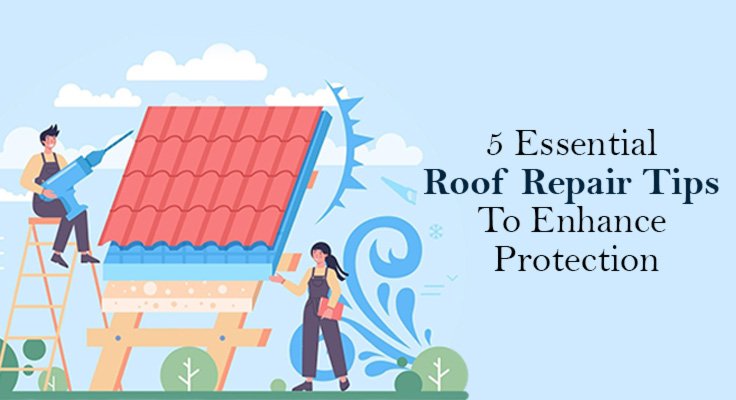Has the rain’s soft sound ever break your sleep at night, a noise usually soothing but feels eerily scary? That sinking sensation when you discover the drops are not hitting your window but falling inside your home is a terror most house owners might know.
A leaky roof is a big worry, but regular upkeep can help avoid it completely. Your roof acts as a barrier protecting your family and home from the outside world. The National Roofing Contractors Association says a roof that’s taken care of can last more than 20 years.
But, if you ignore it, you may have to pay for expensive repairs or even a whole new roof. Avoid letting your roof become a worry.
Instead, use these essential tips and ensure your house remains safe and sound for a long time.
1. Regular Inspections
A regular roof inspection is often key to keeping your house in good shape. It’s like an early-warning system to spot possible minor issues before they grow into big, expensive problems. When doing these checks, you should watch out for warning signs of damage.
These may include lost shingles, leaking points, or sagging spots. Such signs might indicate hidden issues that may secretly harm your roof’s strength. You should inspect your roof annually, ideally in spring or autumn, following significant weather occurrences.
Doing so helps you deal with issues caused by storms, strong winds, or thick snow. Unsure about your roof’s health? It might be good to ask expert residential roofing services for a detailed check. Such companies focus on delivering high-quality work and provide a free, no-obligation roof inspection to evaluate a home’s condition.
Recent numbers show that in the United States, the usual cost to fix a roof is around $1,150. However, it can soar to $8,000 and even higher, based on how much of the roof needs fixing and what materials are used. Regular roof inspections can help you avoid these high costs.
2. Addressing Leaks Promptly
Rooftop leaks are a familiar and hazardous issue. Neglect can cause water damage, mold growth, and even weaken the structure. Finding the root cause of a leak is the first step in resolving it.
Look for color changes or wet spots on your ceiling or walls, and check your attic when it rains. After recognizing the leak, act fast. Minor leaks may be fixed using sealants or patches. Yet, for bigger or more intricate problems, a skilled roofer is necessary.
Current numbers show an average roof replacement costs between $6,700 to $80,000, depending on roof dimensions and material type. By swiftly addressing leaks, you dodge expensive replacements and further harm to your home.
3. Proper Ventilation
Good airflow is critical for keeping your roof and home in good shape. If the air doesn’t move right, your attic could get too damp, which could cause mold, mildew, or even damage to your house’s structure.
You might not have enough airflow if you see too many water droplets, smell musty or have ice buildup in the winter.
These problems could harm your roof and lead to expensive fixes. Consider installing attic fans or ridge vents to improve your ventilation better. These setups push air around and stop wetness from gathering, keeping your roof dry and working well.
Recent numbers say houses with good ventilation could lower their energy expenses by as much as 25%. Ventilation controls inside warmth and coldness, making heating and cooling systems work less hard.
4. Cleaning and Maintenance
It’s crucial to consistently clean and look after your roof to keep it in great shape. Over time, things like leaves, sticks, and moss can pile up on your roof. It can harm it and block the way water drains.
Use a brush with soft bristles and a light cleaning solution to clean your roof. Steer clear of using tools like high-pressure washers or anything rough, as these can ruin the material of your roof.
Also, make sure to close any cracks or holes in your roof. It can keep water and bugs from getting in. By putting time and effort into regular cleaning and care, you can make your roof last longer and keep from having to pay for expensive repairs.
5. Storm Preparedness
Extreme weather can damage your roof, leading to issues ranging from minor leaks to total ruin. To shield your roof during a tempest, consider installing shingles resistant to impact or a metallic roof.
These supplies are crafted to bear up against powerful winds and hailstones, lowering the likelihood of harm. Moreover cut any branches or trees looming over that might collapse on your roof during a stormy event.
When there’s terrible weather, look at your roof for problems and fix them immediately.
Conclusion
A well-maintained roof helps keep your house and family safe. To boost your roof’s guarding ability and make it last, heed these five crucial guidelines. You can prevent expensive fixes, protect your house’s value, and rest easy knowing it’s protected.
Also Read: 9 Tips for Effective Communication as a Business Leader






















